
The Allure of Castle Bruce Beach in Dominica
Discover the tranquil beauty of Castle Bruce Beach in Dominica, where golden sands meet clear blue waters and lush green hills create a tropical paradise.
Castle Bruce Beach is a hidden gem on the eastern coast of Dominica. This serene beach is perfect for those seeking a peaceful retreat. The golden sands and clear blue waters offer a stunning backdrop for relaxation and reflection. The beach is bordered by lush green hills, creating a picturesque setting that feels like a tropical paradise. Visitors can enjoy swimming in the calm waters or take a leisurely walk along the shore, soaking in the natural beauty. Nearby, you can explore the small village of Castle Bruce. The village offers a glimpse into local life, with friendly residents and charming shops. Fresh seafood is a highlight here, with local restaurants serving up delicious dishes made from the catch of the day.
Local tips in Castle Bruce Beach
- Visit early in the morning to enjoy the beach in peace before it gets busier later in the day.
- Bring cash, as some local shops and restaurants may not accept credit cards.
- Try the local seafood dishes at the nearby village restaurants for a delicious and authentic experience.
- Wear comfortable shoes if you plan to explore the surrounding hills and trails.
- Respect the local customs and be friendly to the residents for a more enriching visit.
The Allure of Castle Bruce Beach in Dominica
Castle Bruce Beach is a hidden gem on the eastern coast of Dominica. This serene beach is perfect for those seeking a peaceful retreat. The golden sands and clear blue waters offer a stunning backdrop for relaxation and reflection. The beach is bordered by lush green hills, creating a picturesque setting that feels like a tropical paradise. Visitors can enjoy swimming in the calm waters or take a leisurely walk along the shore, soaking in the natural beauty. Nearby, you can explore the small village of Castle Bruce. The village offers a glimpse into local life, with friendly residents and charming shops. Fresh seafood is a highlight here, with local restaurants serving up delicious dishes made from the catch of the day.
When is the best time to go to Castle Bruce Beach?
Iconic landmarks you can’t miss
Emerald Pool
Experience the breathtaking beauty of the Emerald Pool in Dominica, a tranquil oasis nestled in lush rainforests, perfect for relaxation and adventure.

Titou Gorge
Experience the natural beauty and refreshing waters of Titou Gorge, a hidden gem in Dominica perfect for adventure seekers and nature lovers.
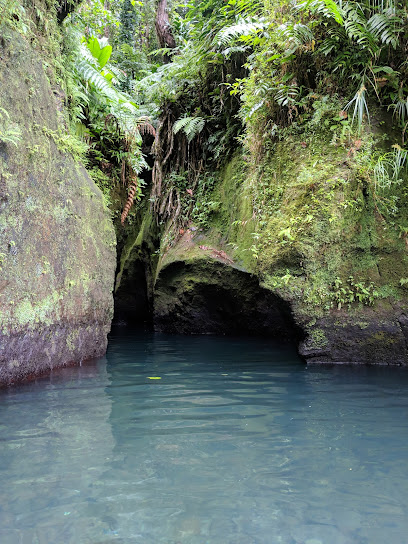
Mero beach
Discover the beauty of Mero Beach in Dominica, where golden sands meet turquoise waters, perfect for relaxation and adventure in the Caribbean.
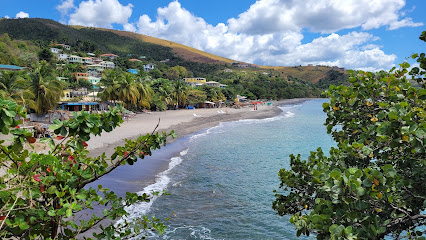
Champagne Reef, Dominica
Explore Champagne Reef in Dominica: A unique geothermal snorkeling paradise with warm waters and vibrant marine life.
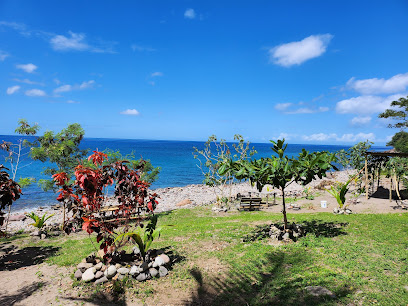
Fort Shirley
Discover Fort Shirley, a historic gem in Portsmouth, Dominica, where colonial history meets stunning Caribbean landscapes.
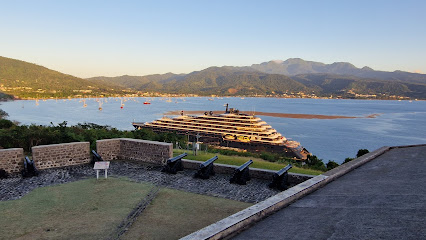
Jacko Falls
Experience the natural beauty of Jacko Falls in Dominica, where lush landscapes and tranquil waters create a serene getaway for all nature lovers.

Morne Bruce Viewpoint
Experience the stunning panoramic views of Roseau and the Caribbean at Morne Bruce Viewpoint, a must-visit destination in Dominica.
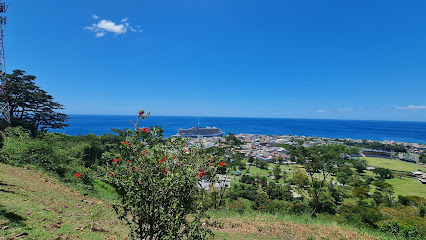
Papillote Tropical Gardens
Explore the enchanting beauty of Papillote Tropical Gardens, a botanical paradise showcasing Dominica's lush flora and tranquil ambiance.
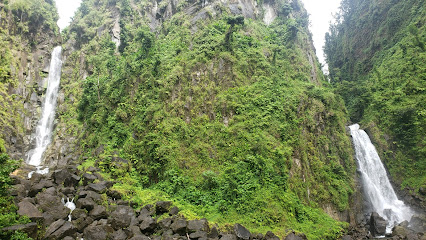
Spanny Falls
Experience the breathtaking beauty of Spanny Falls in Dominica, where nature's wonders await every visitor.

Middleham Falls Dominica
Experience the breathtaking beauty of Middleham Falls, one of Dominica's tallest waterfalls, surrounded by lush rainforest and vibrant wildlife.

Morne Bruce Cross
Explore the historical significance and breathtaking views at Morne Bruce Cross, a must-visit landmark in Roseau, Dominica.
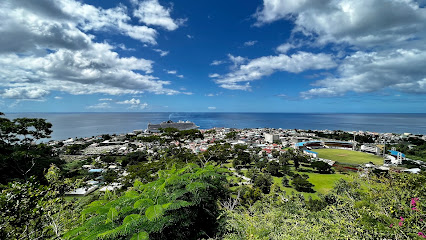
Castle Bruce Park
Explore the natural beauty and cultural richness of Castle Bruce Park, a serene escape in Dominica featuring lush landscapes and vibrant local heritage.
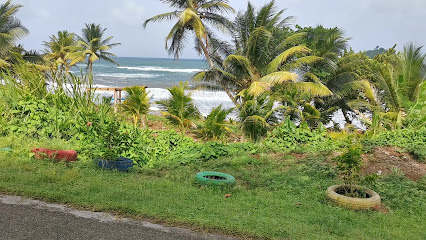
Wavine Cyrique Falls
Experience the breathtaking beauty of Wavine Cyrique Falls, a stunning Caribbean waterfall surrounded by lush rainforests in Dominica.

Morne Bruce
Explore the breathtaking views and serene landscapes of Morne Bruce in Roseau, Dominica, a perfect escape for nature lovers and adventure seekers.
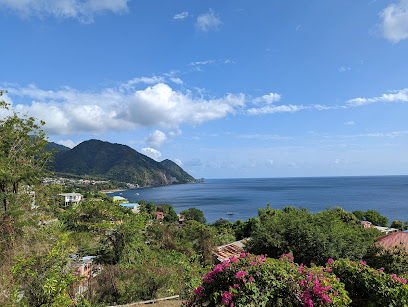
Castle Bruce River
Discover the tranquil beauty of Castle Bruce River, a serene escape into nature with lush landscapes and crystal-clear waters in Dominica.

Unmissable attractions to see
Trafalgar Falls
Experience the breathtaking beauty of Trafalgar Falls, one of Dominica's most stunning natural attractions, where adventure meets tranquility.

Salton Waterfalls
Experience the breathtaking beauty of Salton Waterfalls, a serene nature preserve in Dominica, perfect for nature lovers and adventure seekers alike.

Essential places to dine
Islet View Restaurant & Bar
Experience exquisite dining with breathtaking views at Islet View Restaurant & Bar in Castle Bruce, Dominica.
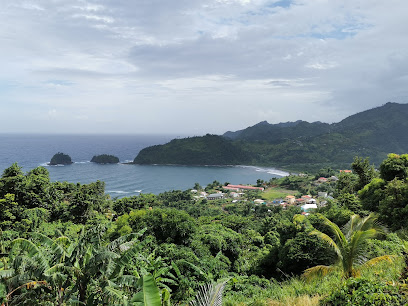
Pagua Bay Bar & Grill
Savor American cuisine with breathtaking views at Pagua Bay Bar & Grill in Marigot, Dominica – a culinary paradise awaits!

Unique seaview restaurant
Experience exquisite local cuisine while savoring breathtaking ocean views at this unique seaview restaurant in Calibishie.
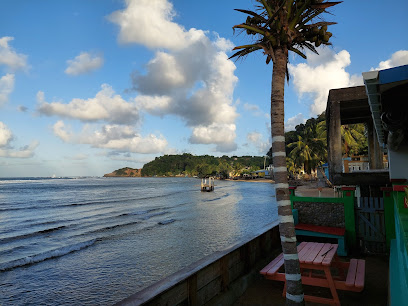
Catalinas
Experience Dominica's culinary treasures at Catalinas - where local flavors meet breathtaking views in Castle Bruce.
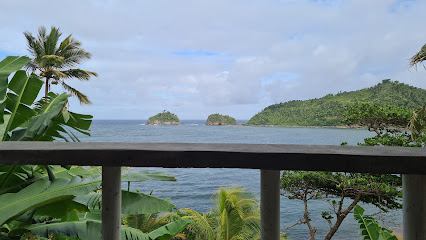
Markets, malls and hidden boutiques
Duty Free Emporium
Shop luxury brands and local treasures at the Duty Free Emporium in Roseau, Dominica's premier destination for tax-free goods.

Beach Avenue, Indian River, Dominica
Discover unique local fashion and souvenirs at Beach Avenue in Indian River, Dominica - a vibrant shopping experience awaits you.
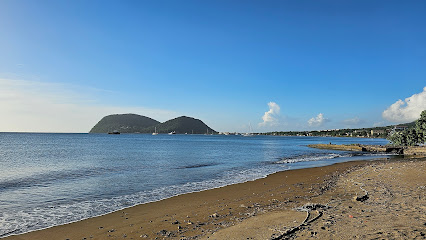
Essential bars & hidden hideouts
Purple Turtle Beach Club
Discover the vibrant atmosphere and stunning views at Purple Turtle Beach Club in Portsmouth, Dominica, where relaxation meets culinary delight.
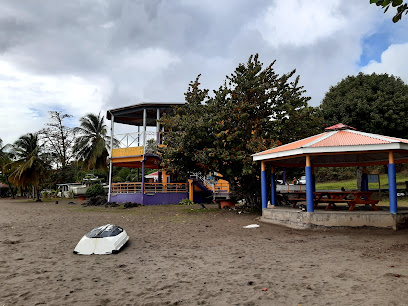
Coral Reef Bar & Restaurant
Discover the flavors of the Caribbean at Coral Reef Bar & Restaurant, where stunning views and delightful cuisine meet in Calibishie.
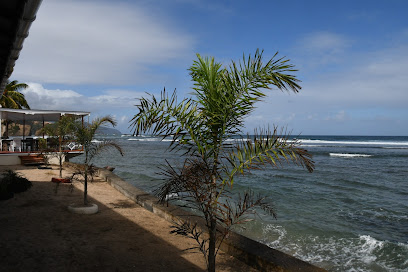
Hi Rise Beach Bar
Experience the flavors of the Caribbean at Hi Rise Beach Bar, where delicious food meets spectacular ocean views in Roseau.
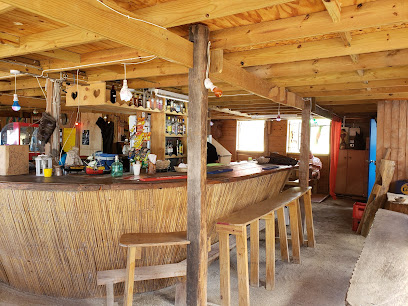
InDee's Beach Bar and Restaurant
Experience the flavors of the Caribbean at InDee's Beach Bar and Restaurant, where every meal is a celebration of local cuisine against stunning ocean views.

Ruins Rock Café
Experience the vibrant flavors of Dominica at Ruins Rock Café, a charming spot in Roseau perfect for relaxing and enjoying local cuisine.
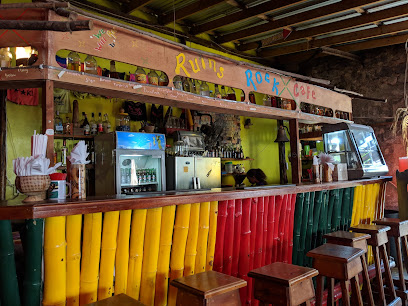
Batibou Beach
Discover the serene beauty of Batibou Beach in Hampstead, Dominica – a paradise for sunbathers, snorkelers, and nature enthusiasts.

Old Stone Grill And Bar
Experience the vibrant flavors of Caribbean cuisine at Old Stone Grill And Bar in Roseau, Dominica - a culinary haven for tourists.

Top bar
Discover the lively atmosphere of Top Bar in Roseau, where locals and travelers come together for refreshing drinks and unforgettable experiences.
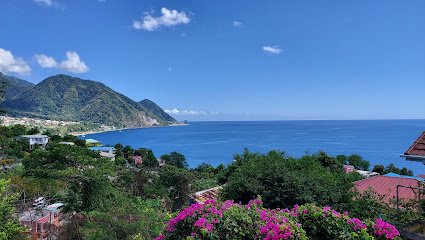
Islet View Restaurant & Bar
Experience the flavors of Dominica at Islet View Restaurant & Bar, where local cuisine meets stunning Caribbean views.
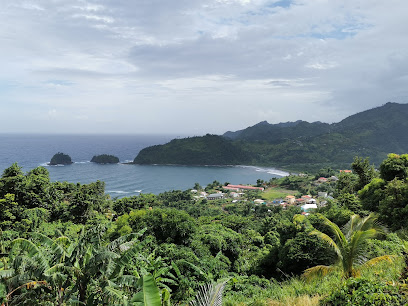
Pagua Bay Bar & Grill
Discover the vibrant flavors of American cuisine with a Caribbean twist at Pagua Bay Bar & Grill, the perfect dining spot in Marigot.
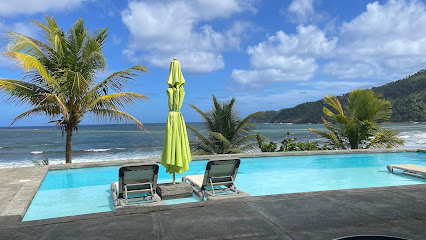
Water Bar
Experience the essence of Trafalgar at Water Bar, where refreshing spring water meets vibrant local flavors in a charming atmosphere.
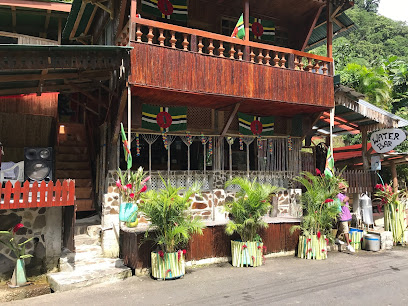
Catalinas
Discover the flavorful journey at Catalinas, a must-visit restaurant in Castle Bruce, where local cuisine meets warm hospitality.
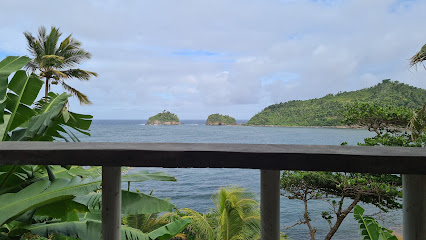
Curlz Cuisine
Experience authentic Caribbean cuisine at Curlz Cuisine in Castle Bruce, where every dish tells a story of local flavor and hospitality.
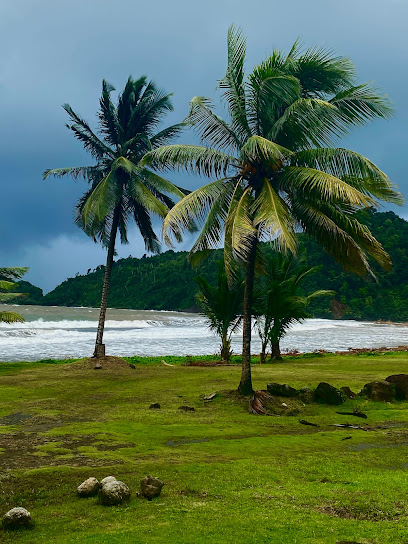
The LaidBack Experience
Discover the Caribbean's vibrant culture and breathtaking views at The LaidBack Experience, your ultimate beach bar retreat in Castle Bruce.
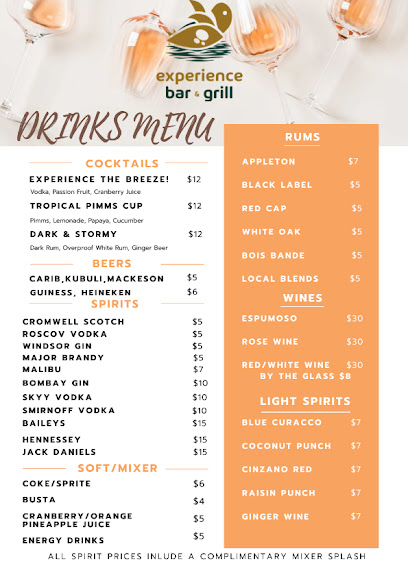
Local Phrases about Castle Bruce Beach
-
- HelloBonjou
[bon-zho] - GoodbyeOrevwa
[oh-rev-wah] - YesWi
[wee] - NoNon
[nohn] - Please/You're welcomeTanpri
[tahn-pree] - Thank youMèsi
[meh-see] - Excuse me/SorryEskize mwen
[es-kee-zay mwenn] - How are you?Kijan ou ye?
[kee-zhan ooh yeh] - Fine. And you?Byen. E ou?
[byen. ay oo] - Do you speak English?Eske ou pale angle?
[es-kay oo pah-le an-glay] - I don't understandMwen pa konprann
[mwenn pa kohn-prahn]
- HelloBonjou
-
- I'd like to see the menu, pleaseMwen ta renmen wè meni a, tanpri
[mwenn tah ren-men way meh-nee ah, tahn-pree] - I don't eat meatMwen pa manje vyann
[mwenn pa man-jay vyahn] - Cheers!Sante!
[sahn-tay] - I would like to pay, pleaseMwen ta renmen peye, tanpri
[mwenn tah ren-men pay-yay, tahn-pree]
- I'd like to see the menu, pleaseMwen ta renmen wè meni a, tanpri
-
- Help!Ed!
[ed] - Go away!Ale!
[ah-lay] - Call the Police!Rele Lapolis!
[reh-lay la-poh-lees] - Call a doctor!Rele yon doktè!
[reh-lay yohn dohk-tay] - I'm lostMwen pedi
[mwenn peh-dee] - I'm illMwen malad
[mwenn mah-lahd]
- Help!Ed!
-
- I'd like to buy...Mwen ta renmen achte...
[mwenn tah ren-men achtay] - I'm just lookingMwen jis gade
[mwenn zjee gah-day] - How much is it?Konbyen sa koute?
[kohn-byen sah koot] - That's too expensiveSa twò chè
[sah twah sheh] - Can you lower the price?Ou ka redwi pri sa a?
[oo kah red-wee pree sah ah]
- I'd like to buy...Mwen ta renmen achte...
-
- What time is it?Ki lè li ye?
[kee lay lee yeh] - It's one o'clockLi senkè
[lee sahn-kay] - Half past (10)Demi (disè)
[deh-mee dee-zay] - MorningMaten
[mah-ten] - AfternoonApremidi
[ah-pre-mee-dee] - EveningAswè
[ah-sway] - YesterdayYè
[yeh] - TodayJodi a
[zho-dee ah] - TomorrowDemen
[deh-men] - 11
[1] - 22
[2] - 33
[3] - 44
[4] - 55
[5] - 66
[6] - 77
[7] - 88
[8] - 99
[9] - 1010
[10]
- What time is it?Ki lè li ye?
-
- Where's a/the...?Ki kote a...
[kee koh-tay ah] - What's the address?Ki adwès la?
[kee ad-way la] - Can you show me (on the map)?Ou ka montre m 'lanmè?
[oo kah mohn-tray m lahn-may] - When's the next (bus)?Ki lè prochen (bis)?
[kee lay proh-shen beess] - A ticket (to ....)Yon tikè (pou ....)
[yohn tee-kay poo]
- Where's a/the...?Ki kote a...
History of Castle Bruce Beach
-
Long before European colonization, the Kalinago people, often referred to as the Caribs, were the original inhabitants of Dominica, including the Castle Bruce area. They were known for their seafaring skills, resistance to European invaders, and vibrant culture. Castle Bruce Beach was an essential part of their livelihood, providing a source of food and a place for community gatherings.
-
In the late 15th century, European explorers, including Christopher Columbus, began to chart the Caribbean. Dominica was claimed by Spain in 1493, but it wasn't until the 17th century that the French and British began to vie for control of the island. The beach at Castle Bruce was a strategic location for these colonial powers due to its accessible coastline.
-
Throughout the 18th century, Dominica changed hands several times between the French and the British. Castle Bruce Beach saw its share of naval skirmishes and land battles as both colonial powers sought to control the island's fertile lands and strategic position. The Treaty of Paris in 1763 eventually ceded control of Dominica to the British.
-
During British rule, Castle Bruce and its surrounding areas became part of the plantation economy that dominated Dominica. Sugar, coffee, and cocoa were the primary crops, cultivated through the labor of enslaved Africans. The beach served as a landing point for goods and a place where enslaved people were brought ashore.
-
The abolition of slavery in 1834 led to significant changes in the Castle Bruce area. Freedmen and women established small villages and began to cultivate their own plots of land. The beach remained an essential part of daily life, serving as a site for fishing, trade, and community gatherings.
-
In the 20th and 21st centuries, Castle Bruce Beach and its surroundings have seen significant development. The area has become a popular destination for both locals and tourists, drawn by its natural beauty and historical significance. Efforts have been made to preserve the cultural heritage of the Kalinago people and the colonial history of the region.
Castle Bruce Beach Essentials
-
Castle Bruce Beach is located on the eastern coast of Dominica. The nearest international airport is Douglas-Charles Airport (DOM), approximately 30 kilometers away. From the airport, you can take a taxi or a shuttle service to Castle Bruce Beach. The journey typically takes about 45 minutes by road. Alternatively, you can rent a car at the airport for more flexibility during your stay.
-
Castle Bruce Beach and the surrounding areas can be easily navigated by rental car or taxi. Public minibuses, known locally as 'buses', operate on a fixed route and are an inexpensive way to travel to nearby towns. However, they can be less reliable in terms of schedule. Walking is also an option for short distances and to explore the immediate beach area.
-
The official currency in Dominica is the Eastern Caribbean Dollar (XCD). While credit cards are accepted in some hotels, restaurants, and shops, it is advisable to carry cash, especially in smaller establishments and remote areas. ATMs are available in larger towns, but it's a good idea to withdraw sufficient cash before heading to Castle Bruce Beach.
-
Castle Bruce Beach is generally a safe destination for tourists. However, it is advisable to take standard precautions. Avoid walking alone at night in unfamiliar areas and keep an eye on your belongings in crowded places. While Dominica has a low crime rate, petty theft can occur, so it's best to stay vigilant and aware of your surroundings.
-
In case of emergency, dial 999 for immediate assistance. The local police station and medical facilities are available in Castle Bruce. It is recommended to have travel insurance that covers medical emergencies. For minor health issues, there are pharmacies in the town where you can purchase over-the-counter medications.
-
Fashion: Do dress casually and comfortably, but avoid overly revealing clothing, especially in more traditional areas. Religion: Do respect local customs and traditions. Remove your hat and wear modest clothing when visiting churches and religious sites. Public Transport: Do be respectful and give up your seat to elderly passengers. Greetings: Do greet people with a friendly 'Good morning' or 'Good afternoon'. A handshake is also common. Eating & Drinking: Do try local delicacies and accept food offerings graciously. Don't refuse hospitality, as it is considered impolite.
-
To experience Castle Bruce Beach like a local, visit the nearby markets where you can buy fresh local produce and handmade crafts. Engage with locals, as they are often friendly and willing to share stories about the area's history and culture. Don't miss trying the local cuisine, including fresh seafood and traditional Dominican dishes. For a unique experience, consider joining a guided tour to explore the natural beauty and hidden gems of the region.
Trending Landmarks in Castle Bruce Beach
Nearby Cities to Castle Bruce Beach
-
Things To Do in La Plaine
-
Things To Do in Mahaut
-
Things To Do in Roseau
-
Things To Do in Rodney Bay
-
Things To Do in Gros Islet
-
Things To Do in Castries
-
Things To Do in Dauphin
-
Things To Do in Marigot Bay
-
Things To Do in Anse la Raye
-
Things To Do in Canaries
-
Things To Do in Soufrière
-
Things To Do in Praslin
-
Things To Do in Malgretoute
-
Things To Do in Woodlands
-
Things To Do in English Harbour








